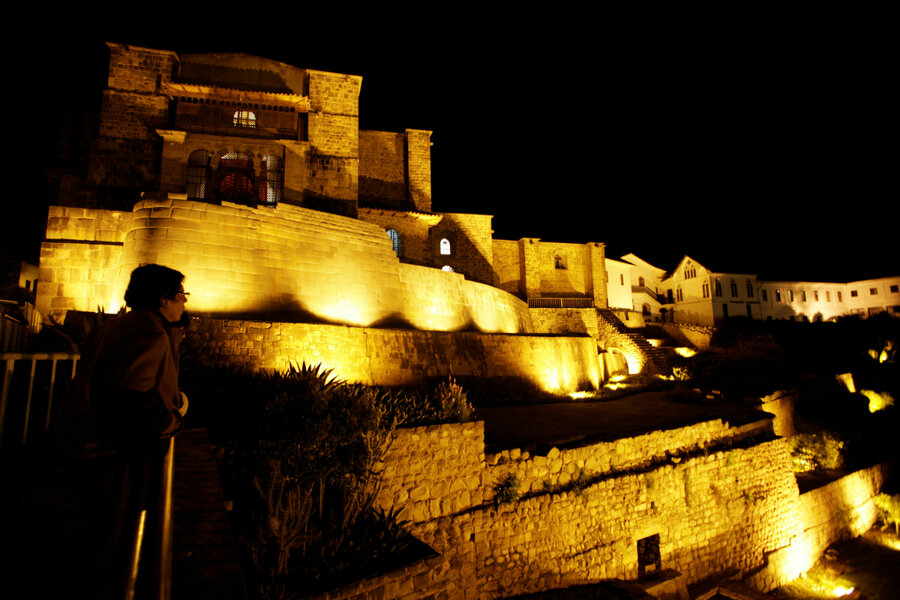Indigenous Peruvians seek help from Pope Francis to regain access to Incan temple
| Lima, Peru
In his 2015 trip to Bolivia, Pope Francis asked for forgiveness for the "grave sins" committed against native people in the Americas in the name of the Catholic church.
In Peru this week, he will be asked to go a step further by making amends for the church's 16th century takeover of the most sacred temple in the Incan Empire: Coricancha.
Practitioners of indigenous Andean rituals want his help securing broader access to the temple in the Peruvian city of Cuzco, the former capital of the Incan Empire and the heart of a thriving tourism industry built on the region's rich pre-Colombian past.
The Spanish demolished much of the original temple of Coricancha after seizing its gold some 500 years ago, building the Santo Domingo Church on top of its ruins as part of the widespread practice at the time of transforming sacred native sites into Catholic ones.
The sophisticated stonemasonry of the Incas is still featured in the foundation of the church of Santo Domingo, which charges tourists to visit Coricancha.
Hatun Ayllu, one of the groups that signed a letter delivered to the pope's representatives before his visit to Peru starting on Thursday, said allowing native rituals to resume regularly in Coricancha would turn papal gestures of regret into atonement for past misdeeds.
"Cuzco was conquered by the sword and the cross," Mr. Ayllu's representative Enrique Riveros said. "But reflecting on it isn't enough. It's time to return to indigenous people what belongs to them."
The church of Santo Domingo and the pope's representatives in Peru did not immediately respond to requests for comment.
While Francis has asked for forgiveness for wrongdoing "during the so-called conquest of America," he has not explicitly expressed regret for the evangelization of indigenous people.
Mr. Riveros and other believers in native gods gathered on a sacred site in Lima this week to blow on sea shells and make offerings to the Earth in a tradition that has survived despite Peru's Catholic majority.
The request for increased access to Coricancha is part of growing calls for Francis, seen by many as the pope who has been most sympathetic to the plight of indigenous people, to help tackle problems from mining pollution to land disputes that have disrupted native ways of life.
In a copy of the letter seen by Reuters, Francis is asked to help establish the "shared use, administration, and property" of Coricancha. "Do not allow, Holy Father, dear little brother of ours, the perpetuation of this injustice against our peoples," it says.
Riveros said that while Ayllu and others can celebrate an Incan sun festival in the temple, they have spent the past nine years performing monthly Andean rituals in a public space alongside Coricancha.
"How is it possible that it's 2018 and we still can't perform our rituals there?" said Riveros. "The Church has the Vatican. Well, our Vatican is Coricancha."
Once filled with gold, Coricancha was believed to be the place where the four quarters of the world met under the Incan Empire, which stretched across large swaths of South America.
"It was literally the center of the Incan universe," said Ronald Elward, a Dutch historian of Peru. "The walls were plated in gold. The Spanish were quite astonished when they saw it."
Hundreds of thousands of foreign tourists flock to Cuzco every year to visit the region's Machu Picchu ruins and other historic Incan sites now administered by local governments or the Church.
Francis is not planning to visit Cuzco but will meet with tribal leaders in the Amazonian region of Madre de Dios on Friday. Earlier this week, he met with indigenous Mapuche in Chile, where some say the pope's ceremony was held on seized ancestral land.
This story was reported by Reuters.





